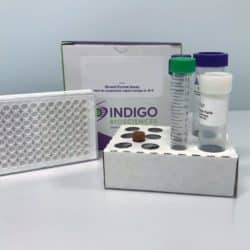Cookie-Einstellungen
Diese Website benutzt Cookies, die für den technischen Betrieb der Website erforderlich sind und stets gesetzt werden. Andere Cookies, die den Komfort bei Benutzung dieser Website erhöhen, der Direktwerbung dienen oder die Interaktion mit anderen Websites und sozialen Netzwerken vereinfachen sollen, werden nur mit Ihrer Zustimmung gesetzt.
Konfiguration
Technisch erforderlich
Diese Cookies sind für die Grundfunktionen des Shops notwendig.
"Alle Cookies ablehnen" Cookie
"Alle Cookies annehmen" Cookie
Ausgewählter Shop
CSRF-Token
Cookie-Einstellungen
FACT-Finder Tracking
Individuelle Preise
Kundenspezifisches Caching
Session
Währungswechsel
Komfortfunktionen
Diese Cookies werden genutzt um das Einkaufserlebnis noch ansprechender zu gestalten, beispielsweise für die Wiedererkennung des Besuchers.
Facebook-Seite in der rechten Blog - Sidebar anzeigen
Merkzettel
Statistik & Tracking
Endgeräteerkennung
Kauf- und Surfverhalten mit Google Tag Manager
Partnerprogramm

| Artikelnummer | Größe | Datenblatt | Manual | SDB | Lieferzeit | Menge | Preis |
|---|---|---|---|---|---|---|---|
| IB-IB31202 | 384 wells (1 x 384 format assays) | - |
7 - 11 Werktage* |
3.803,00 €
|
Bei Fragen nutzen Sie gerne unser Kontaktformular.
Bestellen Sie auch per E-Mail: info@biomol.com
Größere Menge gewünscht? Bulk-Anfrage
Bestellen Sie auch per E-Mail: info@biomol.com
Größere Menge gewünscht? Bulk-Anfrage
This is an all-inclusive cell-based luciferase reporter assay kit targeting the the Human... mehr
Produktinformationen "ADRA1D Reporter Assay System (human)"
This is an all-inclusive cell-based luciferase reporter assay kit targeting the the Human Adrenoreceptor Alpha 1D (ADRA1D). INDIGO's ADRA1A reporter assay utilizes proprietary mammalian cells that have been engineered to provide constitutive expression of the ADRA1D. In addition to ADRA1D Reporter Cells, this kit provides two optimized media for use during cell culture and in diluting the user's test samples, a reference agonist, Luciferase Detection Reagent, and a cell culture-ready assay plate. The principal application of this assay is in the screening of test samples to quantify any functional activity, either agonist or antagonist, that they may exert against ADRA1D. This kit provides researchers with clear, reproducible results, exceptional cell viability post-thaw, and consistent results lot to lot. Kits must be stored at -80 °C. Do not store in liquid nitrogen. Note: reporter cells cannot be refrozen or maintained in extended culture. The adrenoreceptors (a.k.a. adrenergic receptors) mediate the action of the sympathetic nervous system and are activated in response to 'fight-or-flight' signals. They are divided into three types, adrenoreceptor alpha1-, alpha2-, and beta. Each type is further composed of three subtypes resulting in 9 different types (alpha1A, alpha1B, alpha1D, alpha2A, alpha2B, alpha2C, beta1, beta2, and beta3). Adrenoreceptors belong to the G-Protein-coupled receptor (GPCR) family. They all display the characteristic seven transmembrane helices, the extracellular loops which contribute to ligand binding, and the intracellular carboxy tail that associates with trimeric G proteins. All nine types of adrenoreceptors are activated by the same endogenous catecholamines (epinephrine and norepinephrine), however, the specificity of their responses depends on the G-proteins and effectors systems they associate with in a tissue and time specific manner. Adrenoreceptor alpha 1D (ADRA1D) signals through the Galphaq/11 family of G proteins. Upon binding to a catecholamine, ADRA1D undergoes a conformational change that triggers the activation of Galphaq/11 proteins via an exchange of GDP with GTP, followed by the activation of phospholipase C, the release of inositol triphosphate (IP3) which binds to its receptors on the endoplasmic reticulum and triggers the release of calcium and activation of the protein kinase C. ADRA1D is abundantly expressed in the brain3. ADRA1D is highly distributed in dentate nucleus neurons of the cerebellum. Major roles of ADRA1D include involvement in cardiovascular, urinary and central nervous system functions4. Although ADRA1D is closely related to ADRA1A and ADRA1B the precise physiological roles of ADRA1D have yet to be firmly established. Protein function: This alpha-adrenergic receptor mediates its effect through the influx of extracellular calcium. [The UniProt Consortium]
| Schlagworte: | ADRA1A, ADRA1D, Alpha-1D adrenoceptor, Alpha-1D adrenoreceptor, Alpha-1A adrenergic receptor, Alpha-adrenergic receptor 1a, Alpha-1D adrenergic receptor |
| Hersteller: | Indigo Biosciences |
| Hersteller-Nr: | IB31202 |
Eigenschaften
| Anwendung: | Functional activity screening |
| Spezies-Reaktivität: | human |
| Format: | Solid Phase |
Datenbank Information
| KEGG ID : | K04137 | Passende Produkte |
| UniProt ID : | P25100 | Passende Produkte |
| Gene ID | GeneID 146 | Passende Produkte |
Handhabung & Sicherheit
| Lagerung: | -80°C |
| Versand: | -80°C (International: -80°C) |
Achtung
Nur für Forschungszwecke und Laboruntersuchungen: Nicht für die Anwendung im oder am Menschen!
Nur für Forschungszwecke und Laboruntersuchungen: Nicht für die Anwendung im oder am Menschen!
Hier folgen Informationen zur Produktreferenz.
mehr
Hier kriegen Sie ein Zertifikat
Loggen Sie sich ein oder registrieren Sie sich, um Analysenzertifikate anzufordern.
Bewertungen lesen, schreiben und diskutieren... mehr
Kundenbewertungen für "ADRA1D Reporter Assay System (human)"
Bewertung schreiben
Loggen Sie sich ein oder registrieren Sie sich, um eine Produktbewertung abzugeben.
Zuletzt angesehen


